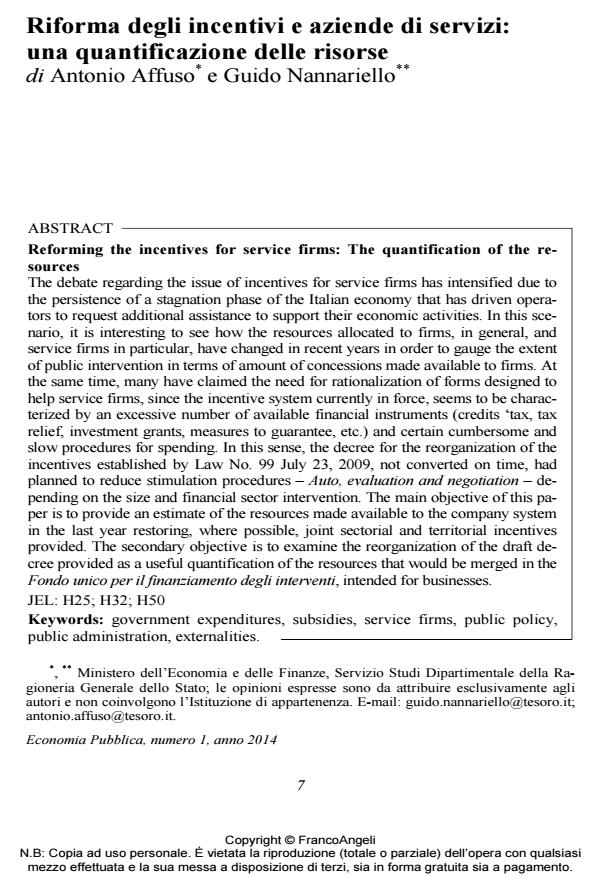Reforming the incentives for service firms: The quantification of the resources
Journal title ECONOMIA PUBBLICA
Author/s Antonio Affuso, Guido Nannariello
Publishing Year 2014 Issue 2014/1
Language Italian Pages 21 P. 7-27 File size 211 KB
DOI 10.3280/EP2014-001002
DOI is like a bar code for intellectual property: to have more infomation
click here
Below, you can see the article first page
If you want to buy this article in PDF format, you can do it, following the instructions to buy download credits

FrancoAngeli is member of Publishers International Linking Association, Inc (PILA), a not-for-profit association which run the CrossRef service enabling links to and from online scholarly content.
The debate regarding the issue of incentives for service firms has intensified due to the persistence of a stagnation phase of the Italian economy that has driven operators to request additional assistance to support their economic activities. In this scenario, it is interesting to see how the resources allocated to firms, in general, and service firms in particular, have changed in recent years in order to gauge the extent of public intervention in terms of amount of concessions made available to firms. At the same time, many have claimed the need for rationalization of forms designed to help service firms, since the incentive system currently in force, seems to be characterized by an excessive number of available financial instruments (credits ‘tax, tax relief, investment grants, measures to guarantee, etc.) and certain cumbersome and slow procedures for spending. In this sense, the decree for the reorganization of the incentives established by Law No. 99 July 23, 2009, not converted on time, had planned to reduce stimulation procedures - Auto, evaluation and negotiation - depending on the size and financial sector intervention. The main objective of this paper is to provide an estimate of the resources made available to the company system in the last year restoring, where possible, joint sectorial and territorial incentives provided. The secondary objective is to examine the reorganization of the draft decree provided as a useful quantification of the resources that would be merged in the Fondo unico per il finanziamento degli interventi, intended for businesses.
Keywords: Government expenditures, subsidies, service firms, public policy, public administration, externalities.
Jel codes: H25; H32; H50
Antonio Affuso, Guido Nannariello, Riforma degli incentivi e aziende di servizi: una quantificazione delle risorse in "ECONOMIA PUBBLICA " 1/2014, pp 7-27, DOI: 10.3280/EP2014-001002